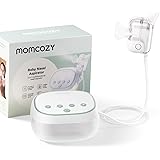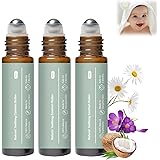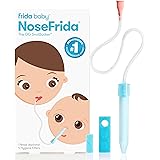Navigating the journey into parenthood introduces a myriad of decisions, particularly concerning infant care items. The sheer volume of products marketed for newborns often creates a sense of overwhelm, leading many expectant parents to acquire more items than are truly necessary. As highlighted in the accompanying video, new parents frequently find themselves with an abundance of baby gear, yet only a fraction of these items prove to be indispensable in the initial months. The goal here is to refine that extensive list, focusing on the genuine newborn essentials that contribute to safety, comfort, and the overall well-being of the infant.
This comprehensive guide complements the valuable insights shared by Brian Shyu, providing an expanded perspective on the critical items every new family should consider. By prioritizing functionality and practicality, families are better positioned to manage the early weeks and months without the burden of excessive, unused baby products. A streamlined approach to newborn preparedness can alleviate stress, allowing parents to concentrate on bonding and adapting to their new roles.
The Foundational Ten: Indispensable Newborn Essentials
1. The Essential Car Seat: Safety First
The car seat is not merely an accessory; it represents a mandatory safety device for transporting a newborn. Its inclusion on any list of newborn essentials is non-negotiable, given the critical role it plays in protecting infants during vehicular travel. Hospital protocols universally dictate that a properly installed and correctly utilized car seat is a prerequisite for discharging a newborn, with staff often providing checks to ensure compliance. The selection of an infant car seat, such as the Nuna Pipa series mentioned in the video, is frequently influenced by its lightweight design and ease of installation, making transitions between vehicles or from car to stroller seamless. These models typically feature a separate base that remains installed in the vehicle, allowing the carrier portion, which often weighs around 5 lbs (in contrast to some models weighing 8-9 lbs before the infant is added), to be easily removed. Adherence to manufacturer guidelines for installation, including specific angles for newborns and correct strap placement, is paramount. Furthermore, parents are advised to regularly inspect the car seat’s expiration date, which is typically found on the unit, as plastic components and safety features can degrade over time.
2. Infant Formula: A Strategic Backup
Even for mothers committed to breastfeeding, infant formula is considered a vital component of newborn essentials during the initial postpartum period. Newborns commonly experience a temporary weight loss, often a percentage of their birth weight, during the first few days while the mother’s milk supply is establishing. Health professionals frequently recommend supplementing with formula during this transitional phase to aid in regaining birth weight swiftly, usually within the first couple of weeks. Ready-to-use liquid formula, like Enfamil or Similac, is particularly favored for newborns under six months due to its sterile nature, which mitigates concerns associated with powdered formula preparation for very young infants. A practical tip often shared involves inquiring about hospital stashes of formula; many birthing centers provide samples to new parents, offering a convenient initial supply without immediate purchase. This proactive measure ensures that nutritional support is readily available, mitigating potential anxieties regarding infant weight gain.
3. Feeding Bottles: Versatility and Choice
The provision of formula or expressed breast milk necessitates the use of feeding bottles, making them a core item in the realm of newborn essentials. Rather than procuring a full set of bottles pre-delivery, new parents are encouraged to utilize samples often provided through baby registry welcome boxes from retailers such as Amazon. These sample packs typically include 2-3 different bottle brands, allowing parents to assess which nipple shape and flow rate their infant prefers without significant upfront investment. Systems like Kindee, highlighted for their convenience, integrate disposable bags within a reusable holder, drastically reducing the washing burden, albeit with environmental considerations. When selecting bottles, factors such as anti-colic features, material composition (glass, silicone, or BPA-free plastic), and ease of cleaning are often prioritized. Experimentation during the initial weeks can ensure a comfortable and efficient feeding experience for the baby.
4. Burp Cloths: Essential for Cleanliness
The inevitability of burping and occasional spit-up renders burp cloths an indispensable item for infant care. These highly absorbent cloths act as a protective barrier, safeguarding parents’ clothing and surrounding surfaces from the common messes associated with infant feeding. Typically designed for easy cleaning, they are readily washable and quick to dry, ensuring a constant supply can be maintained. Parents often find themselves needing multiple burp cloths throughout the day, particularly during growth spurts or periods of increased reflux. Their versatility extends beyond just feeding times; they can be used for quick clean-ups of spills or as a gentle wipe for baby’s face. Investing in a sufficient quantity of high-quality, absorbent burp cloths, often available from brands known for their durability, is a pragmatic approach to managing daily infant hygiene.
5. Diapers: A Continuous Necessity
Diapers represent a fundamental, non-negotiable item for any newborn. The sheer volume required underscores their essential status. While it is challenging to predict a newborn’s exact size before birth, making pre-purchase of large quantities impractical, hospitals are typically well-stocked. New parents can often request a supply of newborn-sized diapers to take home, bridging the gap until specific sizing requirements become clear. Subsequently, convenient options like subscription services from brands such as Mama Bear or easy online ordering simplify replenishment. When selecting diapers, features such as wetness indicators, a contoured fit for the umbilical cord stump, and hypoallergenic materials are often considered. The continuous nature of diaper changes necessitates a reliable and readily available supply, minimizing disruptions to both infant and parent.
6. Baby Wipes: Beyond Diaper Changes
Alongside diapers, baby wipes are an absolute essential, prized for their versatility and efficacy. Their utility extends far beyond mere diaper changes, proving invaluable for cleaning sticky hands, faces, and various spills that inevitably occur throughout the day. Parents frequently express that baby wipes are one item they wish they had acquired even before having children, testifying to their broad applicability. When choosing wipes, a balance of moisture content, gentleness, and absence of harsh chemicals or strong scents is often sought, particularly for a newborn’s sensitive skin. Brands like Rico, known for their high water content and mild formulations, are often favored. Similar to formula and diapers, hospitals are typically equipped with baby wipes, allowing new parents to request a stash for initial use, thereby delaying immediate purchases.
7. Safe Sleep Space: Bassinet or Crib
Ensuring a safe sleeping environment is paramount for a newborn, with a bassinet or crib serving as a critical newborn essential. The American Academy of Pediatrics (AAP) recommends that infants sleep on their back, alone, in a crib or bassinet in the parents’ room for at least the first six months, ideally a year, to reduce the risk of Sudden Infant Death Syndrome (SIDS). A bassinet is often preferred for the initial months due to its compact size and portability, allowing it to be placed closely beside the parents’ bed. This proximity facilitates nighttime feedings, comforting, and monitoring without the need for parents to leave their bed. Bassinets are typically outgrown around 4-6 months, or once the baby can push up on their hands and knees, at which point a full-sized crib becomes necessary. Regardless of the choice, the sleep space must be kept clear of loose blankets, bumpers, pillows, or any other items that could pose a suffocation hazard, emphasizing a firm mattress with a fitted sheet as the sole bedding.
8. Swaddles or Blankets: Comfort and Security
Swaddles or receiving blankets are fundamental for providing warmth and a sense of security to a newborn, mimicking the snug environment of the womb. The act of swaddling can help calm an infant, reduce the startle reflex (Moro reflex), and promote more restful sleep. Parents are advised to have at least two to three swaddles readily available, as they frequently become soiled and require washing, ensuring a clean backup is always at hand. Brands such as Viverano are noted for their soft, stretchy, and lightweight materials, which are ideal for comfortable swaddling. When swaddling, it is crucial to ensure that the baby’s hips can move freely, preventing hip dysplasia, and to discontinue swaddling once the infant shows signs of rolling over. Various types of swaddles exist, including traditional square blankets, and those with Velcro closures or zipper designs, offering different levels of ease for parents.
9. Zippered Sleepers: Practicality for Night Changes
The frequent diaper changes required by newborns, particularly during the nighttime hours, elevate the importance of practical clothing. Zippered sleepers, extending from the feet to the neck, emerge as an indispensable item for new parents. Their design significantly streamlines the changing process; a quick zip from the bottom allows access to the diaper area without needing to undress the baby entirely. This efficiency contrasts sharply with the laborious and often frustrating task of snapping multiple buttons in a dimly lit room, especially when dealing with a crying, sleep-deprived infant. The ease of access provided by zippered sleepers minimizes disturbance to the baby’s sleep and reduces stress for the parents. Prioritizing these over button-down versions can make a considerable difference in the overall experience of nighttime infant care, ensuring changes are swift and smooth.
10. Stroller: Mobility for Outdoor Adventures
As parents and infants acclimate to life outside the hospital, the need for mobility becomes evident. A stroller, therefore, earns its place among the top newborn essentials, facilitating outdoor excursions and allowing parents to maintain an active lifestyle. For newborns, a stroller that accommodates a car seat or a bassinet attachment is highly recommended. This integration enables seamless transitions from car to stroller without disturbing a sleeping infant, preserving their nap routine. Travel systems, which pair a compatible car seat with a stroller, offer a convenient solution for this purpose. When selecting a stroller, factors such as ease of folding, maneuverability, weight, and storage capacity are often considered. Getting outside for fresh air is beneficial for both parent and baby, providing a much-needed change of scenery and promoting well-being after being confined indoors.
Beyond the Basics: Highly Beneficial Bonus Items
Formula Coupons: Cost-Saving Strategies
For families utilizing infant formula, securing brand-specific coupons can lead to substantial savings. Companies like Enfamil and Similac frequently offer rebate checks or coupons to members of their online communities, often amounting to significant discounts, such as up to $70 off per rebate book. Engaging with these programs requires a simple sign-up on their respective websites. These checks can then be redeemed at local grocery stores or pharmacies, directly reducing the cost of formula purchases. Given the ongoing expense associated with formula feeding, strategic use of these coupons represents a prudent financial approach for new parents.
Binkies (Pacifiers): Soothing Aid
While sometimes a point of discussion among parents, pacifiers, often referred to as binkies, can serve as a beneficial soothing tool for newborns. Brands like Nanobébé and Philips Avent offer various pacifier designs with different nipple shapes and sizes, catering to individual infant preferences. Beyond providing comfort, the American Academy of Pediatrics (AAP) suggests that pacifier use at naptime and bedtime may reduce the risk of SIDS. It is important to introduce a pacifier once breastfeeding is well-established, typically around 3-4 weeks of age, if chosen. If a baby rejects a pacifier, no pressure should be applied, as not all infants will take to them.
Waterproof Changing Pad Protectors: Simplified Hygiene
Accidents during diaper changes are an inevitable part of newborn care. Waterproof changing pad protectors are designed to mitigate the mess, acting as an easily washable barrier for the changing pad. These protectors are typically laid directly on top of the changing pad, absorbing any leaks or spills and preventing them from reaching the main pad or its cover. Their simple design allows for quick removal and laundering, significantly reducing the frequency with which the entire changing pad cover needs to be washed. This convenience helps maintain a hygienic changing area with minimal effort, making them a practical addition to any nursery setup.
Breast Pump: Supporting Lactation
For breastfeeding mothers, a breast pump often proves to be an invaluable tool. In the United States, the Affordable Care Act (ACA) mandates that most insurance plans cover the cost of a breast pump, making it accessible to many families at no charge. A breast pump can be instrumental in establishing and maintaining milk supply, particularly in the early weeks. It also provides flexibility, allowing partners to participate in feedings and giving mothers the option to build a milk stash for later use, or for when they return to work. Hospitals can often assist with obtaining a pump, and lactation consultants can offer guidance on its proper use and types (manual, electric, hospital-grade) that best suit individual needs.
Butt Paste (Diaper Rash Ointment): Protective Care
Diaper rash is a common ailment for infants, making diaper rash ointment, or “butt paste,” an important preventative and treatment measure. The key ingredient to seek in these ointments is zinc oxide, which acts as a protective barrier on the baby’s skin, shielding it from moisture and irritants. Brands such as Burt’s Bees Baby are often praised for their balance of effectiveness and mild scent. Other effective options include A+D ointment, though its color and scent may differ. Applying a thin layer of zinc oxide-based cream during diaper changes, especially at night or when a rash appears, can help protect the baby’s delicate skin and promote healing. This proactive approach ensures comfort and helps prevent more severe skin irritations.
Baby Mittens: Scratch Prevention
Newborns often have surprisingly sharp fingernails but lack the fine motor control to prevent accidental scratches to their own faces or bodies. Baby mittens offer a simple yet effective solution to this common issue. These small fabric coverings are placed over the baby’s hands, acting as a protective barrier. Alternatively, many newborn clothing items now incorporate fold-over cuffs, which serve the same purpose. While a minor item, mittens can prevent skin irritation and superficial injuries, contributing to the baby’s overall comfort and safety during their initial weeks. Their use is typically temporary, as infants quickly develop better control over their movements.
The journey of parenting a newborn is filled with constant learning and adaptation. By focusing on these carefully selected newborn essentials, families can create a supportive environment without succumbing to the pressure of over-purchasing. Many of the initial items needed are available through hospital provisions or can be acquired as required, emphasizing a thoughtful, step-by-step approach to preparing for a new arrival.











